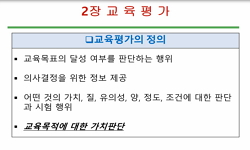Background: Tobacco use is the single most important preventable risk factor for cancer. Surveillance of tobacco-related cancers (TRC) is critical for monitoring trends and evaluating tobacco control programmes. We analysed the trends of TRC and evalu...
http://chineseinput.net/에서 pinyin(병음)방식으로 중국어를 변환할 수 있습니다.
변환된 중국어를 복사하여 사용하시면 됩니다.
- 中文 을 입력하시려면 zhongwen을 입력하시고 space를누르시면됩니다.
- 北京 을 입력하시려면 beijing을 입력하시고 space를 누르시면 됩니다.
https://www.riss.kr/link?id=A103247400
- 저자
- 발행기관
- 학술지명
- 권호사항
-
발행연도
2016
-
작성언어
English
- 주제어
-
등재정보
SCOPUS
-
자료형태
학술저널
-
수록면
2841-2846(6쪽)
- 제공처
-
0
상세조회 -
0
다운로드
부가정보
다국어 초록 (Multilingual Abstract)
Background: Tobacco use is the single most important preventable risk factor for cancer. Surveillance of tobacco-related cancers (TRC) is critical for monitoring trends and evaluating tobacco control programmes. We analysed the trends of TRC and evaluated the population-based cancer registry (PBCR) in Delhi for simplicity, comparability, validity, timeliness and representativeness. Materials and Methods: We interviewed key informants, observed registry processes and analysed the PBCR dataset for the period 1988-2009 using the 2009 TRC definition of the International Agency for Research on Cancer. We calculated the percentages of morphologically verified cancers, death certificate-only (DCO) cases, missing values of key variables and the time between cancer diagnosis and registration or publication for the year 2009. Results: The number of new cancer cases increased from 5,854 to 15,244 (160%) during 1988-2009. TRC constituted 58% of all cancers among men and 47% among women in 2009. The age-adjusted incidence rates of TRC per 100,000 population increased from 64.2 to 97.3 among men, and from 66.2 to 69.2 among women during 1988-2009. Data on all cancer cases presenting at all major government and private health facilities are actively collected by the PBCR staff using standard paper-based forms. Data abstraction and coding is conducted manually following ICD-10 classifications. Eighty per cent of cases were morphologically verified and 1% were identified by death certificate only. Less than 1% of key variables had missing values. The median time to registration and publishing was 13 and 32 months, respectively. Conclusions: The burden of TRC in Delhi is high and increasing. The Delhi PBCR is well organized and generates high-quality, representative data. However, data could be published earlier if paper-based data are replaced by electronic data abstraction.
동일학술지(권/호) 다른 논문
-
Etiopathogenesis of Gastric Cancer
- Asian Pacific Journal of Cancer Prevention
- Goral, Vedat
- 2016
- SCOPUS
-
Melanoma in Iran: a Retrospective 10-Year Study
- Asian Pacific Journal of Cancer Prevention
- Ferdosi, Samira
- 2016
- SCOPUS
-
Hypermethylation Status of E-Cadherin Gene in Gastric Cancer Patients in a High Incidence Area
- Asian Pacific Journal of Cancer Prevention
- Rashid, Haroon
- 2016
- SCOPUS
-
- Asian Pacific Journal of Cancer Prevention
- Chavengkun, Wasugree
- 2016
- SCOPUS





 ScienceON
ScienceON




